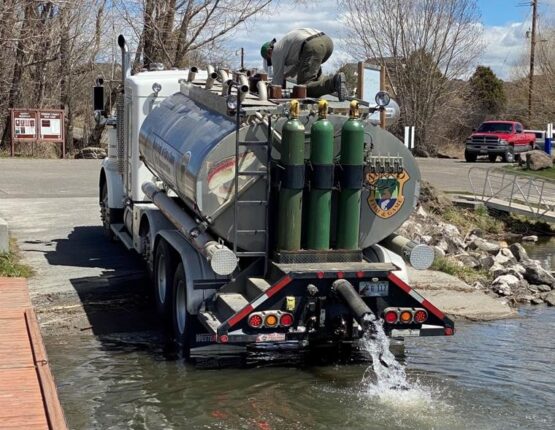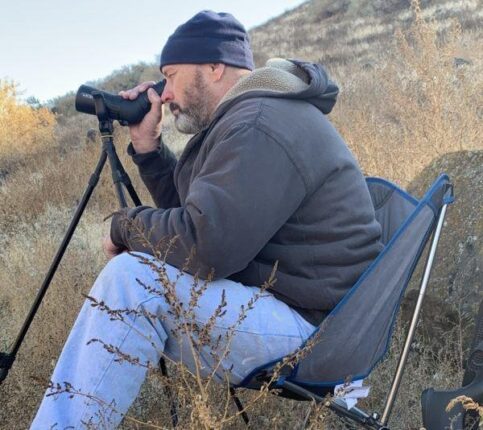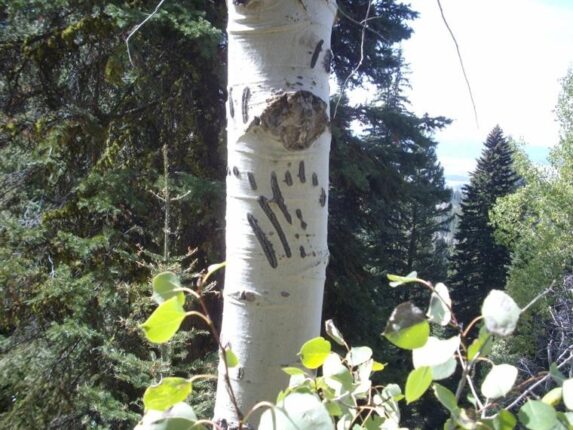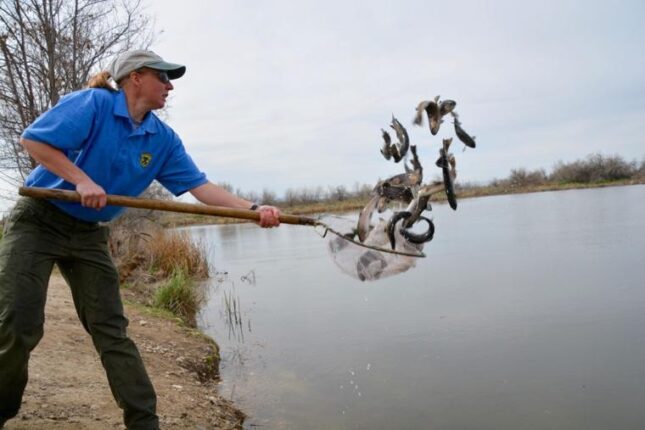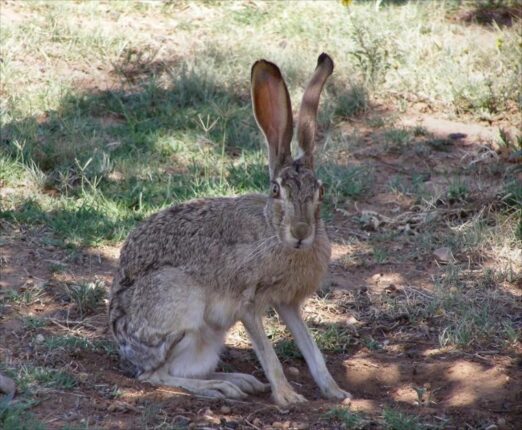The month of May will see some heavy duty stocking efforts by Idaho Fish and Game with more than 65,000 rainbow trout going into several locations around the Upper Snake Region and more than 32,000 trout in southeastern locations.
These are all catchable-size trout in the 10- to 12-inch range.
One notable stocking that didn’t make any of Fish and Game’s April reports was 38,750 rainbows dumped into Ashton Reservoir this past week.
“They had them ready and decided to do it last Monday and Tuesday,” said James Brower, Fish and Game regional communications manager, of the Ashton Reservoir stocking. “They put the fish near the boat ramp just over the river bridge (north of town). There’s plenty of fishing up and down the bank there and people fishing off the dock have done pretty good.”
Of the 65,000 fish scheduled for May, Ririe Reservoir will get 18,000 in the middle of the month and Island Park Reservoir is slated for 9,600. Birch Creek is due to receive two stockings during the month for a total of more than 5,000. The Henrys Fork will get three stockings during the month totaling about 7,500 trout.
Brower said spring is an ideal time to get out while the fish are more active.
“It’s a good time while the weather is a little bit cooler before some places heat up,” he said. “Some of those ponds the water gets kind of warm and the fish kind of turn off a bit. But while the water is still cold the fish will be active and should be biting.”
Southeast Idaho waters are also being prepped for the big summer fishing season.
“We have 31 stocking events in the Southeast Region in the month of May alone,” said Jennifer Jackson, regional communications manager with Fish and Game. “Some of those places are going to be hit more than once. We’ve got more than 32,000 fish to be stocked at these different sites in southeast Idaho.”
These sites include the Bear River, Crowthers Reservoir, Deep Creek Reservoir and several smaller ponds. Montpelier Reservoir is due for 5,000 fish later in the month.
“We’ve got Memorial Day coming up at the end of the month and people are getting excited to get out fishing and enjoying the summer weather, so this is the big push getting us ready for fishing season,” Jackson said.
In the Salmon area, about 3,500 trout will be planted in local ponds and at Mosquito Flat Reservoir. The Hayden Creek Pond will receive 1,000 during the month and Mosquito Flat Reservoir will also get about 1,000 toward the end of the month.
For specifics on planned fish stocking locations and schedules, go to Fish and Game’s Fish Planner online at idfg.idaho.gov/fish/stocking#stocking-schedule.
